1959
1959 The first useful ion thrust device was developed under the sponsorship of ABMA. This device would be capable of providing the thrust necessary for station-keeping of smaller, precise-orbit satellites.
1959 Authority was granted to increase the Redstone Hospital's capacity up to 75 beds to accommodate the post's increasing military population.
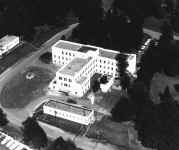
1959 The production of HAWK guided missiles began during this year.
January 59 The RSA Merit Promotion Plan was put into effect during the month. The plan was developed in conformance with regulations put out by DA and the Civil Service Commission, and applied to AOMC, Redstone Arsenal, and OGMS.
January 59 Redstone Arsenal installed The Army Functional Files (TAFF) system in all file keeping offices. This new system of filing was mandatory in all activities of the Army Field Command and replaced the War Department Decimal Files system used by the Army for over 40 years.
January to June 59 A strong and aggressive union, the American Federation of Government Employees, RSA Lodge 1858, emerged during this period. By 30 June, it had a membership of more than 4,000 civilian employees.
January to June 59 The new RSA Commissary opened.
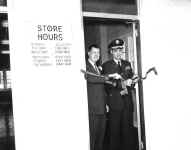

1 January 59 The new Federal Merit Promotion Program became mandatory for all federal agencies.
3 January 59 The first NIKE HERCULES firing held at Fort Churchill, Canada, was fully successful.
8 January 59 NASA assigned ABMA the mission to develop eight REDSTONE-type vehicles for use in the MERCURY manned satellite program.
12 January 59 McDonnell Aircraft Corporation was announced as the primary source for design, development, and construction of the MERCURY-REDSTONE capsule.
21 January 59 JUPITER Missile CM-21 became the first Chrysler production qualification missile to be fired. All primary missions were successfully accomplished.
29 January 59 The AOMC Liaison Office -NASA was established at Langley Field, Virginia, to assist NASA personnel with command activities for that agency, with particular emphasis on the manned satellite project.
16 February 59 After DA's approval of the offshore procurement from the French government of the SS-10 as an interim antitank weapon, as well as limited acquisition of the SS-11 for test and evaluation, ARGMA assumed management responsibility for both systems.
3 March 59 PIONEER IV, the second Army vehicle to carry a NASA lunar probe experiment, was launched at AMR at 0011 hours Eastern Standard Time (EST). A joint ABMA/JPL project under the direction of NASA, it achieved a velocity in excess of 24,560 miles per hour; passed within about 36,000 miles of the moon; and traveled on to become the first U.S. satellite in permanent orbit around the sun. Radio contact with PIONEER IV was maintained to a record distance of 406,620 miles.
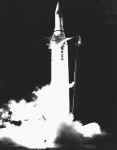
25 March 59 The 23d Ordnance Company (REDSTONE) was inactivated effective this date.
31 March 59 The Missile Electronics Laboratory at RSA first formally proposed an automatic command guidance for an infantry antitank missile.
6 April 59 JUPITER Missile 201, the first Chrysler-produced IOC missile, was delivered to ABMA. The completion of Block I IOC missile delivery, set for October 59, would discharge ABMA's IOC missile production responsibility. Industry would produce the rest.
13 April 59 AOMC Headquarters transferred operation of the AOMC Information Center from the Huntsville Airport to Redstone Arsenal.
18 April 59 ABMA accepted the first PERSHING I missile from a R&D contract definitized with the Martin Company on 25 June 58.
29 April 59 The Chief of Ordnance authorized development of the Combat Vehicle Weapon System (Pentomic) and assigned overall weapon system responsibility to the Ordnance Tank-Automotive Command (OTAC). The latter agency delegated contractual supervision authority to ARGMA that same month. In June 59, the Chief of Ordnance reoriented the development program and assigned the popular name SHILLELAGH to the project. This was one of the few missile programs in which an AOMC element served in a support capacity to another Ordnance Corps installation.
May 59 Because of its dissatisfaction with the LACROSSE I's performance and the Army's decision not to produce an improved weapon, the USMC dropped out of the program during this month.
May 59 The Army completed a four-volume study on its proposed Project HORIZON, which detailed all aspects of a national program to establish a manned outpost on the moon's surface by 1966.
5 May 59 The 55th Army Band, less personnel, was transferred from Fort Polk, Louisiana, to Redstone Arsenal and assigned to the Chief of Ordnance effective this date. The Chief of Ordnance further assigned the unit to the AOMC Commander, who in turn reassigned the unit to the U.S. Army Garrison at RSA. CONARC procured personnel for the band from various Army commands.
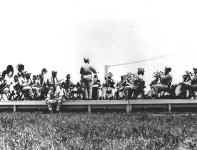
25 May 59 The first LACROSSE battalion was activated at Fort Sill, Oklahoma.
28 May 59 The flight of monkeys Able (an American-born rhesus monkey supplied by the Army) and Baker (a South American squirrel monkey furnished by the Navy) marked the first successful recovery of living creatures after their return to earth from outer space. The monkeys rode in the nose cone of JUPITER Missile AM-18 to an altitude of 300 miles and a distance of 1,500 miles, successfully withstanding 38 times the normal pull of gravity and a weightless period of about 9 minutes. Their survival of speeds over 10,000 miles per hour was the first step toward putting a man into space.
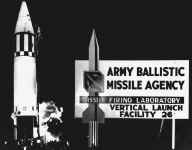
1 June 59 Able died from the effects of anesthesia given to allow the removal of electrodes implanted for the monkey's historic space flight. A subsequent autopsy revealed that the monkey had suffered no adverse effects from the flight.
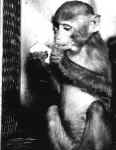
11 June 59 Development of the SHILLELAGH subsystem began with Aeronutronic, a division of Ford Motor Company, as prime contractor.
14 June 59 A definitive contract was signed with Nord Aviation of France for the procurement of the SS-10 missile system.
30 June 59 Convair received the REDEYE development contract.
July 59 AOMC was tasked to take over operation of the rocket research facilities at Fort Churchill, Manitoba, Canada. Beginning in September 59, the command conducted tests there for the U.S. Army, the U.S. Air Force, and the Canadian government. The tests included upper atmospheric research tests and cold weather testing of LACROSSE.
July 59 ARGMA initiated a 21-day checkout program to provide a system operational checkout for each tactical HAWK missile battery before releasing it to the user.
July to December 59 A breakthrough occurred in the transport of missiles by rail with the procurement of the Lord Elastic Tie-down, the first approved other than rigid tie-down equipment to be used for rail bracing. Its main advantages were its shock absorbing features, reuse capability, and economy.
1 July 59 NASA discontinued work on the JUPITER phase of the MERCURY program because in its opinion technical problems prevented the fitting of MERCURY capsules to the JUPITER booster.
1 July 59 LACROSSE equipment for the first reduced strength artillery battalion and its ordnance support detachment was delivered to Fort Sill, Oklahoma, achieving the Ordnance Readiness Date.
1 July 59 DA approved the first type classification of limited production for the PERSHING I.
3 July 59 The RSA nine-hole golf course officially opened. The golf driving range located at the rear of the Service Club was moved to the new facility.
23 July 59 ARPA representatives visited ABMA beginning this date to discuss studies of a Maneuverable Recoverable Space Vehicle (MRSV) along three general lines of investiga-tion: missions, systems, and components.
30 July 59 The Chief of Ordnance assigned weapon system management responsibility for the LAW to AOMC. The latter command subsequently delegated R&D mission responsibilities to ARGMA on 10 Sept 59. However, responsibility for the LAW industrial and field service missions was assigned to the Ordnance Special Weapons Ammunition Command (OSWAC).
19 August 59 ARGMA Test Range #5 was severely damaged during a static firing of an experimental propellant motor being developed by Rohm & Haas for the NIKE ZEUS program. The explosion left AOMC without adequate facilities to test large solid propellant motors. There were no personal injuries or deaths as a result of the detonation, but private property damage was estimated at $17,118 and government property damage at $632,574. Most of the property damage was caused by flying debris.
26 August 59 JUPITER Missile AM-19, the first JUPITER missile to be programmed for a short range flight, was successfully fired.
27 August 59 All national missions relating to target missile systems were centralized in ARGMA on this date.
September 59 The 1,000th firing of the HONEST JOHN was conducted early this month.
September 59 The contract for the design of an improved LACROSSE guidance system was terminated.
5 September 59 The Army began initial deployment of personnel to Italy for installation of the JUPITER.
23 September 59 After undergoing a critical reevaluation, the second generation HAWK program was terminated, except for some component development.
25 September 59 The first rail shipment (about 1,800 miles) from RSA of a REDSTONE missile loaded on its transporter was made on a "Clejan" Car, a centersill flat car with shock-absorbing equipment. An idler car was also used. This shipment demonstrated the feasibility of moving large missiles by rail.
28 September 59 The AOMC Legal Office published a command policy on the use of indemnification clauses in Army missile contracts, pursuant to 10 U.S.C. 2354. Although the statute was enacted in 1952, this marked the first time that a policy statement on the use of such clauses had been issued within the Army.
28 September 59 The new Post Exchange officially opened.
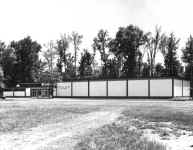
October 59 ARPA assigned to ARGMA responsibility for the Pacific Range Electromagnetic Signature Study (PRESS), a component of Project DEFENDER.
1 October 59 BG John A. Barclay became acting Deputy Commanding General of AOMC as well as ABMA Commander.
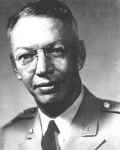
6 October 59 AOMC established a technical liaison office for the U.S. HAWK in Paris, France.
13 October 59 ABMA launched JUNO II Vehicle AM-19A, which successfully placed EXPLORER VII into orbit. The fourth satellite launched by the Army as well as the last of the U.S.-IGY satellites, EXPLORER VII contained seven experiments designed to extend the knowledge of outer space, particularly of cosmic radiation. According to the U.S. Weather Bureau Chief, the satellite also opened a new era in global meteorology.

14 October 59 ABMA gave NASA an interim technical report on lunar exploration using SATURN boosted systems.
21 October 59 President Eisenhower approved the transfer of ABMA scientists and engineers to NASA. Soon thereafter, on 27 October, the Chief of Ordnance advised AOMC that the Army's work for the civilian agency would be handled under the Cooperative Agreement of 3 December 58. ABMA's Development Operations Division would remain an Army responsibility until phased to NASA after Congressional approval.
21 October 59 JUPITER Missile AM-31, the first full-range prototype, was fired from Cape Canaveral. All missions assigned to the flight were successful.
26 October 59 The first shoulder firings of the LAW were accomplished by Hesse-Eastern, Ordnance Corps, and Infantry Board personnel at the ARGMA test range beginning this date. They finished the following day.
November 59 DA classified the Phase II LITTLEJOHN as limited production. Limited procurement of the system components also started.
2 November 59 President Eisenhower announced his intention to transfer the SATURN program to NASA.
2 November 59 The massive blockhouse and launch complex from which ABMA would fire the PERSHING missile was turned over to the missile development team at Cape Canaveral.
4 November 59 JUPITER Missile CM-33 was the first successful Chrysler assembled JUPITER to be fired in the test program as well as the first to be launched without static firing.
6 November 59 The Chief of Ordnance directed that responsibility for chartering and controlling joint coordinating committees be transferred from AOMC to OSWAC.
18 November 59 The successful firing of JUPITER Missile AM-25 marked the first medium range flight for a tactical prototype.
30 November 59 PERSHING Missile 105, the first PERSHING flight test missile, was delivered on schedule.
30 November 59 The number of REDSTONE missiles to be prepared for Project WILLOW, another high altitude detonation measurement program like HARDTACK, was reduced from seven to two.
14 December 59 AOMC finally acquired a long-needed C-46 aircraft on this date. This plane could hold 13,000 pounds of cargo and 14 passengers.

16 December 59 The Army-NASA Transfer Plan, signed by the NASA Administrator, the Secretary of the Army, and the Acting Secretary of Defense, provided for ABMA's continued performance of military weapon system missions and permitted NASA to establish a substantially independent space vehicle R&D organization located on Redstone Arsenal.
31 December 59 Toward year's end, RSA developed a critical shortage of enlisted personnel in the military police career field. An actual shortage of 22 MPs existed on this date, with a known loss of 15 more to occur within the next 90 days.

The ABMA/AOMC Era:
Introduction,
1956,
1957,
1958,
1959,
1960,
1961,
1962
